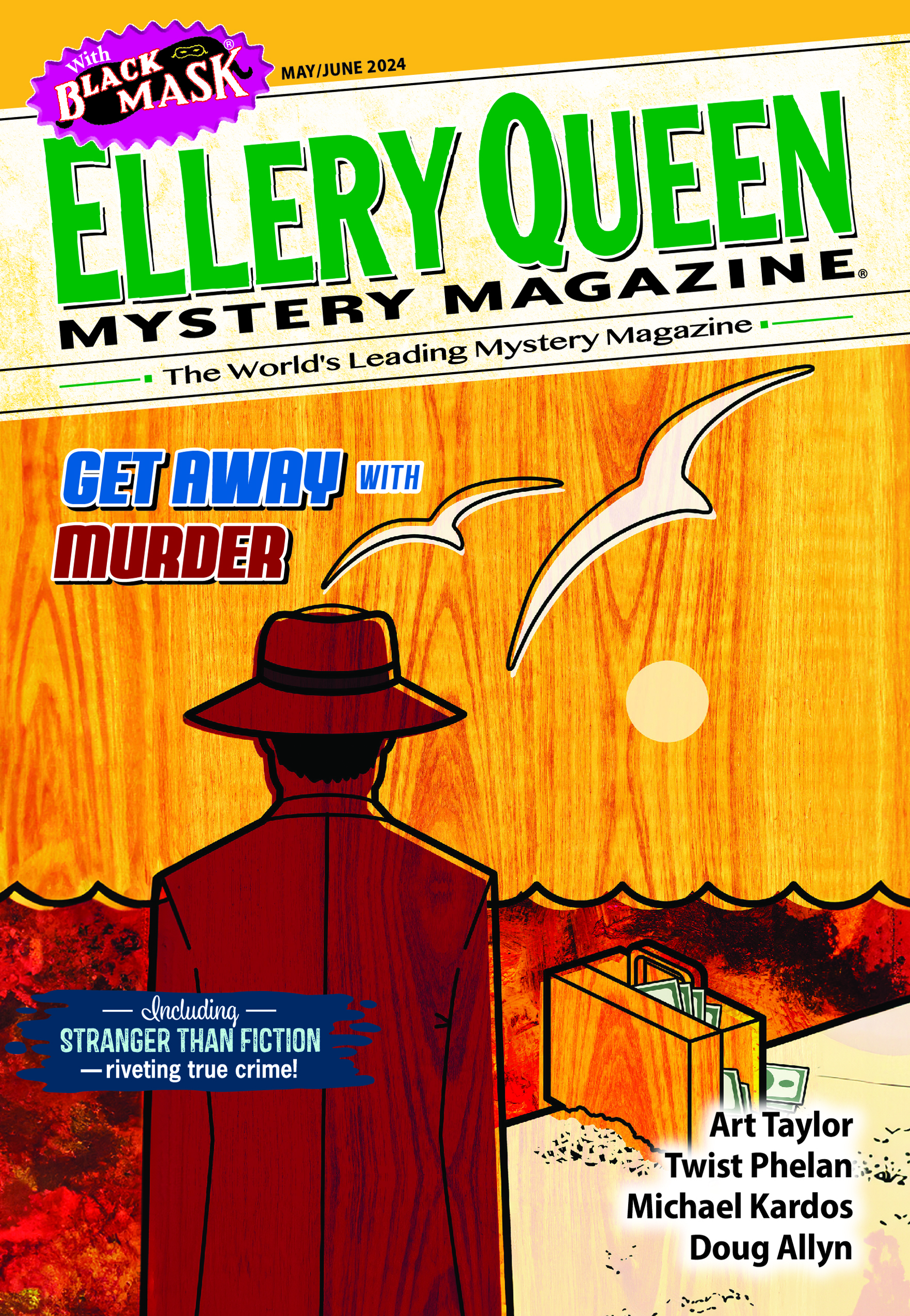Mark SaFranko is the author of a number of novels, including Hating Olivia (Harper Perennial) and No Strings (Thomas & Mercer). His books have been published widely abroad, especially in French-speaking countries and in the U.K., with his latest novel, Odiondo Olivia published this month in Italy. Yet short fiction has a powerful attraction for the author too. His stories have appeared previously in EQMM and in many other publications, winning the Frank O’Connor Award from Descant magazine in 2005. In this post he talks about the relative ease with which short stories (as opposed to novels) can be adapted for film.—Janet Hutchings

Not long ago while I was having my annual conversation with one of my former American publishers, she let drop the following statement: “Whenever a short story collection crosses a desk here at __________, there’s a collective groan.”
We both laughed. It was her way of telling me not to even think of trying to send one in her direction, but beneath our shared humor I was disappointed. Of course it’s well known that for book publishers story collections are viewed as something of an economic liability—it’s a miracle that a few are published in any given year—and I happen to be, and have been for long time, a serious practitioner of the form.
But I had to wonder at the shortsightedness of my former publisher, who, I thought, should know better. While the short story will never be able to compete with the doorstop novel in the perception of the reading public (in America, I believe, we actually think that in investing in the big fat novel we’re getting more bang for our bucks), we do so at the risk of losing sight of the story as an invaluable source of feature-film material. While conventional wisdom nudges the powers that be in the film world to best-selling novels as a source of material (whenever we see one of those ubiquitous lists heralding the new year’s books-to-film offerings, there’s never a story collection or standalone story on that list), I can’t help but think of the many great movies that were grown from the short form.
Some classic movie titles are well known to most of us who are on the lookout for such connections: It Happened One Night (adapted from the short story “Night Bus” by Samuel Hopkins Adams); the many screen iterations of The Killers, based on the Hemingway story; Hitchcock’s The Birds and Rear Window, based on the Daphne Du Maurier and Cornell Woolrich stories respectively; All About Eve, from the Mary Orr’s “The Wisdom Of Eve”; Blow Up, from the story of the same name by Julio Cortázar. But those are merely the tip of the iceberg.
I have my own set of favorites. For a variety of reasons space and time won’t allow me to go into, at the top of that list is probably Nicolas Roeg’s masterpiece, Don’t Look Now, based another story by Du Maurier, frame by frame a perfect piece of cinematic art, a movie whose influence has only grown since it was released in 1973. And Todd Field’s In The Bedroom, based on short story master Andre Dubus’s seventeen-page piece titled “Killings.” Lucchino Visconti had a crack at it with one of his masterworks, Death In Venice. So did Stanley Kubrick, with Arthur C. Clarke’s “The Sentinel,” which was turned into 2001: A Space Odyssey. Perhaps my most recent favorite was the critically acclaimed 45 Years by Andrew Haigh, which was culled from British writer David Constantine’s twelve-page story, “In Another Country.”
Anyway, you get the idea. If you’re not already aware of it, the short story is a great provenance for equally great films. And we’re not even talking about the stories that are adapted and fail to garner the attention of the above-mentioned titles.
So what is it that makes the short story perfect fodder for cinema? Aside from providing the basic idea, the blueprint—and all filmmakers, like writers and painters and composers, need an idea—let’s think about the difference between it and its principal literary rival for notice by the movie folks, the novel.
When it comes to the novel, the adaptation process is by necessity completely different (making exceptions, of course, for the length and breadth of the TV series using novels as source material—the upcoming Showtime series featuring all five of Patricia Highsmith’s Ripliad leaps to mind). Aside from the very rare example—a film like Lord Of The Flies occurs—that is able to faithfully include the entirety of a novel, the screenwriter is saddled with the tasks of excising and compressing, cutting and deciding what and who to leave out. The results are often lacking. We only have to summon the titles of such bombs as The Bonfire Of The Vanities . . . Dune . . . andThe Great Gatsby to conjure up the disasters that these efforts resulted in. In some cases—Lord Jim, Ulysses, Tropic Of Cancer—the literature was too great to be wrestled successfully onto celluloid.
But not always. For instance, Anthony Minghella’s version of The Talented Mister Ripley—taking nothing away from René Clément’s first movie of the book, Purple Noon, which is chock full of its own merits, to be sure—is the perfect example of what I call “excavation.” This is the process by which the adaptor (in this case Minghella as both screenwriter and director) brings into daylight layers of implied but unspoken aspects of the original work and in some ways actually improveson it. I believe this is the case with Minghella’s film, the haters and naysayers notwithstanding. Highsmith would presumably have loved his version; she famously once said that she expected any director utilizing her work to impose his or her own unique vision over her original.
Which brings me to my central point about the short-story-to-film dynamic. The reason that the story is perfect provender for the screen is its sheer adaptability. Why? It allows for a real collaboration between the writer and screenwriter. What “lies below” the surface of the literature can be filled out, imagined, and “excavated,” as it were, as it was in the case of Ripley. In essence, the short-story writer has presented the filmmaking team with a ready-made treatment that can be stretched this way and that, manipulated and molded.
One interesting example of this phenomenon was the 2006 Australian film Jindabyne. The Ray Lawrence-directed movie starred Gabriel Byrne and Laura Linney and transplanted Raymond Carver’s classic story “So Much Water So Close To Home”—already adapted in Robert Altman’s Short Cuts—to Australia. Nearly every sentence of Carver’s original was given a different kind of life. The personalities of the main characters are deepened and filled out, the secondary characters are granted a fuller existence, and situations and scenes merely hinted at in the nine-page original piece are fully developed. Add to that the change of landscape and you have an utterly unique creation.
Annie Proulx, who wrote the original story for the award-winning and critically praised Brokeback Mountain—which totaled all of eleven pages in its original New Yorker appearance—said, after evaluating all of the advantages her story provided for cinematic treatment: “I began to wonder why movie people didn’t prefer short stories to novels, since the opportunity for original work is built in.”
I’m not at all certain that the fault in this regard lies with the movie people. Perhaps the problem lies with the major houses, like my publisher at one of the Big Five, who look down their noses at the short story and thus limit their accessibility in book form. I’ve always liked to say that one great short story is worth ten bad novels, and while that may be an exaggeration, I believe it to be true. Perhaps the film community doesn’t always know exactly where to look for all the wonderful material generated by the practitioners of the short form.
But the bizarre, unfathomable prejudice against the form can extend even further. Larry McMurtry, Diana Ossana’s screenwriting partner on Brokeback Mountain, had to be forced to read the story in the first place. “No,” he objected when she tried to corner him with it. “You know I don’t read short fiction anymore.”
She went on to point out in her essay accompanying the published screenplay, “. . . . in my mind it was an excellent blueprint for a screenplay . . . We did not have to streamline or condense. We had the luxury of using our own imaginations to expand and build upon that blueprint, rounding out characters, creating new scenes, fleshing out existing ones. It was such an enjoyable experience, it made me wonder why more short stories weren’t adapted into films.”
She added that the Proulx story condensed twenty years of time into just a few pages and that she and her partner were able to option it with their own money—both obvious advantages over the novel form.
I’m not suggesting that you’ll find a movie when you read the next story you pick up. But I’m convinced that there is plenty of great material floating around out there just waiting to be discovered.

